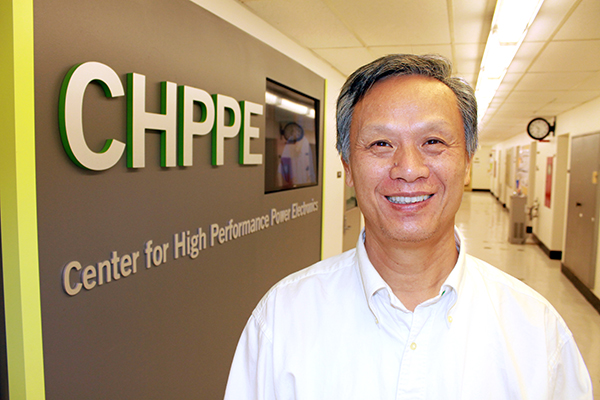
Longya Xu, electrical and computer engineering professor at the Ohio State, leads the project which was selected by DOE supported energy reduction initiative “Next Generation Electric Machine”. Credit: Courtesy of Ryan Horns.
Ohio State’s Center for High Performance Power Electronics has joined a White House initiative that aims to develop new technologies to double U.S. energy productivity by 2030.
The national initiative, named the “Next Generation Electric Machines,” is supported by the Department of Energy and provides $22 million in funding for five research teams developing energy-reduction technologies. The project OSU proposed will design and test a new drive system aiming to improve the energy efficiency in a range of industries, according to the DOE website.
“The industrial sector consumes over 30 percent of all the energy consumed in the U.S.,” said Longya Xu, an electrical and computer engineering professor directing the project. “If that is the case, just 1 or 2 percent of the efficiency improvement (in the industry sector) means a huge amount of energy saved.”
Once the drive system is running successfully, it can be integrated into electric grids and be applied to a variety of electric motors, like engines of mining machines, airplanes and hybrid electric vehicles, with fewer energy losses and a greater reliability.
The DOE program funding OSU’s drive system project, which OSU joined in September, is part of an umbrella initiative announced by President Barack Obama in January to boost U.S. manufacturing by developing wide-bandgap semiconductor technologies.
“Replacing less efficient industrial motor systems with more advanced, variable-speed direct-drive systems and incorporating recent power electronics advances, such as wide-band gap semiconductors, could reduce industrial electricity consumption by 2 to 4 percent, leading to up to $2.7 billion in annual energy savings, reducing up to 27 million tons of carbon emissions each year, and creating high-quality manufacturing jobs,” said David Danielson, assistant secretary for Energy Efficiency and Renewable Energy, in a U.S. Department of Energy release.
Xu said the team is currently working with DOE, making adjustments to the initial plan as well as negotiating the fund. Xu estimated the final result of the negotiation to be $2.7-3 million, with partial funding from OSU and companies in collaboration with the team.
Xu said he foresees the team encountering many challenges in the next three years while working on this project, most of which he said will likely be technological issues.
“This is the first time we are doing this. Concept-wise it works, but we haven’t dealt with such a high voltage before,” Xu said.
However, Xu said he remains confident given the technical merits of the initial design and the “well-rounded plan” they have for the entire project.
As a university-based research project, Xu said he believes training students to be “the next generation engineers” will always be a top priority. Six to eight graduate students will be on the team, participating in the project at all levels from designing and testing the system to managing the overall process.
“It’s a world-class project. So if you work through the entire process, it would be your first step towards a world-class engineer,” Xu said.
Xuan Zhang, a doctoral candidate in electrical and computer engineering who’s on the project team, said getting involved in a research project like this will give him a good taste of what his job will be like in the future.
“There is definitely a lot to learn to participate in this project … moreover, collaborations with companies and other universities would help students like me make connections,” Zhang said.
Xu said the team is currently running preliminary tests on equipment and will quickly get to the next stage of its project when it receives more of the government funding.
Xu said he believes the project is vital not only from a scientific-research perspective but also for society as a whole because energy and environment issues are never small issues and will continue to be crucial for the sustainability of the world.
“If we left these two big issues unaddressed in the long term, the entire human civilization would be in question,” Xu said.


